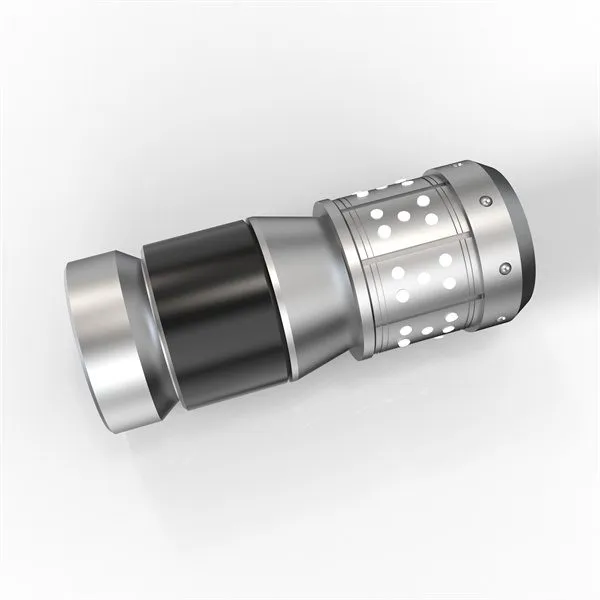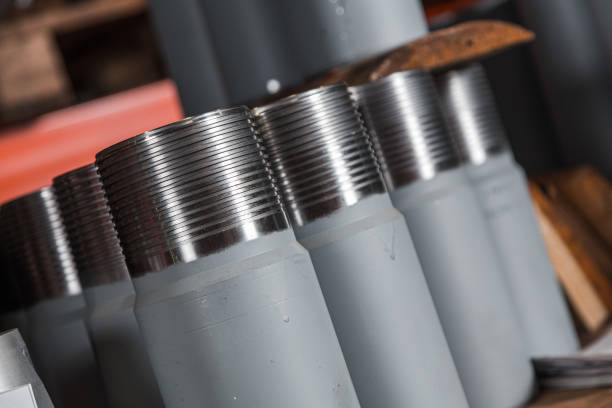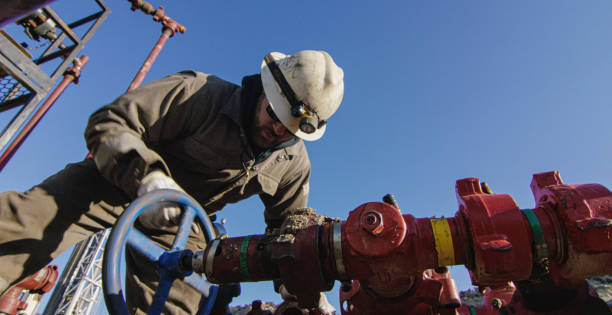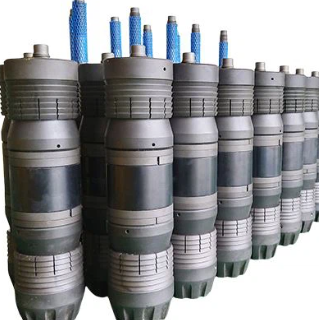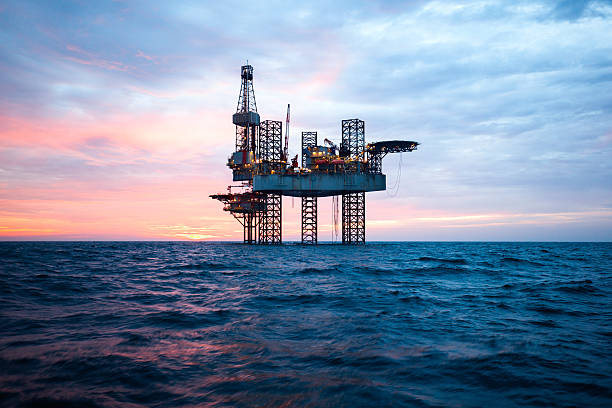English

Oil drilling equipment
Oil Drilling Equipment The Engine of Energy Extraction Powering the Modern World

The quest for energy beneath the Earth’s surface relies on a symphony of powerful, specialized machinery. Oil drilling equipment forms the backbone of upstream operations, transforming geological potential into tangible resources. From piercing the first layer of soil to securing a producing well thousands of feet deep, this complex arsenal of technology enables the discovery and extraction of vital hydrocarbons. Understanding this equipment is key to appreciating the engineering marvel that fuels global economies.
More Than Just a Rig The Core Systems of Drilling
While the towering derrick is the most visible symbol, modern drilling is a highly integrated process involving numerous sophisticated systems working in concert:
- The Drilling Rig The Command Center
Power System Massive diesel engines or electric motors generate the immense power needed to drive the entire operation – rotating the drill string, circulating mud, and hoisting heavy loads.
Hoisting System The crown block, traveling block, and drawworks work together with heavyweight wire rope (drilling line) to raise, lower, and suspend the entire drill string and casing. This system handles enormous weights with precision.
Rotary System Comprising the rotary table (on land rigs) or top drive system (increasingly standard on modern rigs, both land and offshore), this provides the torque to rotate the drill string and attached bit, grinding through rock formations. Top drives offer significant advantages in efficiency and safety.
Mast/Derrick Provides the structural height necessary to handle stands of drill pipe and supports the hoisting system. - The Drill String The Reaching Arm
Drill Pipe Heavy, seamless steel tubes screwed together to form the long “string” connecting the surface equipment to the bottom hole assembly (BHA) and bit. They transmit rotation, weight, and drilling fluid.
Heavy Weight Drill Pipe (HWDP)/Drill Collars Thick-walled, heavy pipes placed above the bit to provide weight for drilling and stiffness to the lower part of the string, improving bit stability and performance.
Bottom Hole Assembly (BHA) A specialized assembly below the drill pipe, including:
Drill Bit The cutting tool (e.g., roller cone bits, PDC – Polycrystalline Diamond Compact bits) that physically breaks the rock.
Downhole Motors (Mud Motors) Provide additional rotational power directly to the bit, independent of drill string rotation, crucial for directional drilling.
Measurement While Drilling (MWD) & Logging While Drilling (LWD) Sophisticated sensors near the bit that collect real-time data on formation properties (gamma ray, resistivity, porosity), wellbore trajectory (azimuth, inclination), and drilling parameters (vibration, torque) and transmit it to the surface.
Stabilizers Centralize the BHA within the borehole.
Jars Provide upward or downward impact to free stuck pipe. - The Circulating System The Lifeblood
Mud Pumps High-pressure pumps (duplex or triplex) that circulate drilling fluid (mud) down the drill string, through the bit, and back up the annulus (space between the pipe and wellbore).
Drilling Fluid (Mud) A specially engineered fluid that:
Cools and lubricates the drill bit.
Carries rock cuttings (drill cuttings) to the surface.
Controls subsurface pressures to prevent blowouts.
Stabilizes the wellbore walls.
Transmits hydraulic energy to downhole tools.
Surface Mud Handling System:
Shale Shakers Vibrating screens that separate large cuttings from the returning mud.
Desanders/Desilters Hydrocyclones that remove finer sand and silt particles.
Degassers Remove entrained gases from the mud.
Mud Tanks/Pits Store and condition the drilling fluid before recirculation. Modern systems emphasize closed-loop circulation for environmental control.
Mixing Equipment Adds chemicals and additives to maintain mud properties. - Well Control System The Ultimate Safety Barrier
Blowout Preventer (BOP) Stack The critical safety device mounted on the wellhead at the surface (or seabed for offshore). It can seal the wellbore in emergencies to prevent uncontrolled flow (a blowout). Key components include:
Annular Preventers (e.g., Hydril) Seal around any object in the hole or the open hole itself.
Ram Preventers Seal around specific pipe sizes (Pipe Rams) or shear through pipe and seal the wellbore (Shear/Blind Rams).
Choke & Kill Lines/Manifolds Allow controlled pumping of heavy fluids (kill mud) into the well while controlling pressure release during well control operations.
BOP Control Unit (Accumulator) Provides stored hydraulic power to rapidly close the BOP rams and annulars, even if rig power is lost. - Casing and Cementing Equipment Building the Well
Casing Large-diameter steel pipe run into the drilled hole and cemented in place to:
Prevent wellbore collapse.
Isolate different formations (e.g., freshwater zones from hydrocarbons).
Provide a conduit for production tubing.
Allow installation of the wellhead and BOP.
Cementing Unit High-pressure pumps and tanks used to pump cement slurry down the casing and up the annulus, securing and sealing the casing in place.
Evolution and Specialization Meeting Modern Challenges
Oil drilling equipment continuously evolves to tackle more complex reservoirs and demanding environments:
Offshore Technology Jack-up rigs, semi-submersibles, drillships, and specialized subsea equipment (BOPs, risers) enable drilling in deepwater environments.
Directional & Horizontal Drilling Advanced downhole motors, rotary steerable systems (RSS), and sophisticated MWD/LWD allow precise wellbore navigation to access reserves miles away from the rig site or maximize reservoir contact.
Automation & Digitalization Automated pipe handling (Iron Roughneck, Robotic Arms), real-time data analytics, remote monitoring centers, and AI-driven optimization are increasing efficiency, safety, and decision-making.
High-Pressure/High-Temperature (HPHT) Equipment Specialized materials and designs for wells exceeding 15,000 psi and 350°F.
Reduced Environmental Footprint Closed-loop mud systems, cuttings re-injection or treatment, energy-efficient rigs, and advanced leak detection.
Why Robust Drilling Equipment Matters Impact on Success
The quality, reliability, and technological sophistication of oil drilling equipment directly impact:
Safety Robust BOPs, well-maintained hoisting systems, and automated handling significantly reduce risks for personnel.
Efficiency Powerful rigs, effective bits, and optimized fluid systems translate to faster drilling, reduced “non-productive time” (NPT), and lower overall costs per foot drilled.
Wellbore Quality Precise control systems and stable BHAs lead to smoother, in-gauge wellbores, essential for successful casing runs and long-term well integrity.
Reservoir Access Advanced directional drilling and logging tools unlock previously inaccessible reserves.
Environmental Protection Effective well control and waste management systems prevent spills and contamination.
Project Viability The ability to drill complex wells safely and economically determines the feasibility of developing challenging fields.
Conclusion The Unsung Heroes of Energy Security
Oil drilling equipment represents the pinnacle of heavy industrial engineering and continuous innovation. Far more than just the iconic rig, it encompasses a vast array of interdependent systems, each playing a critical role in the high-stakes operation of finding and extracting oil and gas. From the relentless power of the mud pumps to the intelligent sensors near the bit and the unwavering safety of the BOP stack, this equipment works tirelessly under extreme conditions to power our world. As the industry pushes into deeper waters, hotter formations, and seeks greater efficiency and sustainability, the relentless advancement of oil drilling equipment remains fundamental to meeting global energy demands. Investing in and understanding this technology is not just about extracting resources; it’s about enabling energy security through engineering excellence.


